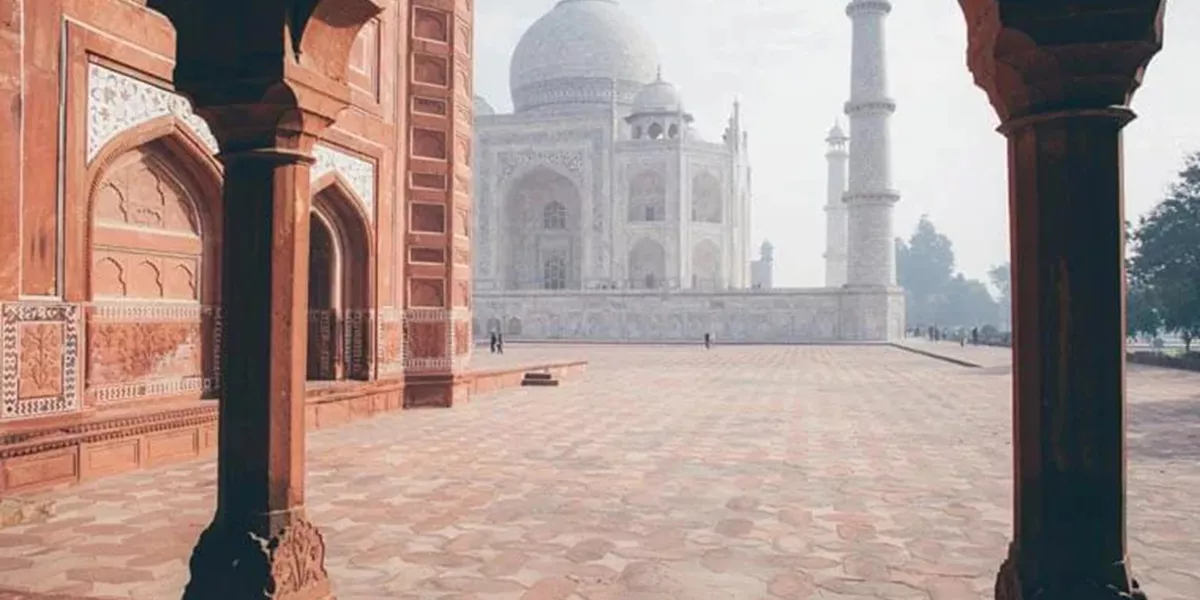© Copyright 2025 Contiki. All Rights Reserved. MAKE TRAVEL MATTER® is a trademark of The TreadRight Foundation, registered in the U.S. and other countries and regions, and is being used under license. Contiki Holidays Limited, Travel House, Rue du Manoir St Peter Port, Guernsey, GY1 2JH, Reg No: 50681. Licensed by the Commission for Aviation Regulation TA 00807.
Why travel to India with Contiki?
Tick that, bucket list!
See all the Indian icons in a single trip – the Taj Mahal, Agra Fort, and even the Pink City of Jaipur.
Conquer the chaos
On our India trips for 18-35s, you’ll travel with expert Trip Managers AND local guides who’ll do all the navigating for you.
Unique experiences
From tasting Mumbai street food classics to supporting anti-poaching initiatives in Ranthambore – with us, you’ll experience India beyond the basics.
Book with confidence
Lock in your spot with a €100 deposit
Amend your booking up to 60 days pre-trip
Plans changed? Your payments are protected
Frequently asked questions
Your search for ""
clear searchWhat is the currency used in India?
The currency used in India is the Indian Rupee ⟨₹⟩.
When is the best time to visit India?
If you want to avoid the sultry weather, it’s best to visit India between October to April. Luckily, that’s exactly when our trips run (perfect if you want to skip the monsoon too!).
The temperature during these months tends to vary according to where you are. In the North, like Delhi, Agra, Jaipur and Udaipur - it can get rather cold, especially during December and January. So don’t forget to pack a good snuggly jacket. But in the South, like Mumbai and Goa, you’ll get balmy tropical vibes throughout the year.
Do I need a visa to travel to India?
Most travellers need a 30-day e-visa (that costs between US $25 - $75) when travelling to India. You can apply through the Government of India’s official website. Not sure if you’ll need a visa? Our visa guide can help you out.
Don’t forget - you’ll need this Ground Handler information when you apply for the e-visa:
Travel Scope India
Office No. 215, Qutab Plaza, Ashoka Crescent Marg,
DLF Phase 1, Sector 26, Gurugram, Haryana 122002, India
Phone: +91 124 499 9499
What should I pack when travelling to India?
You’ll be travelling through many types of weather. So, don’t forget some essentials like a daypack and rucksack, plenty of t-shirts and trousers, comfortable trainers, jogging suits, and a good cap (or hat in the summer).
If you’re spending the time cooling off in the Himalayas, don’t forget to bring a warm jacket, some insect repellent, sun protection, woolen items, and a good torch with batteries. And of course, a sleeping bag with inner liners is essential too.
What should I wear in India?
Generally, it’s not accepted in Indian culture to wear clothing that shows too much skin. So we recommend that you respect the culture by keeping yourself mostly covered (even on the beaches!). But you’re welcome to wear shorts in the bigger cities, since they tend to be more tourist-friendly.
Is internet access good in India?
Internet access in India’s cities tends to quite well. But don’t expect the same when you’re travelling to remote areas. Generally, all hotels provide free wifi, and getting a SIM card with mobile data is quite cheap too.
What is ATM access like in India?
It’s best to keep some cash in hand when you’re visiting India. While ATMs are accessible, they might not always be reliable. So make sure to take some cash out at the ATMs in the bigger cities (like Mumbai and Delhi).
How many days should I spend in India?
You’ll be able to visit some of the most popular spots in India in under 12 days. Plus you’ll have plenty of time to explore them too. But if you’re interested in exploring India beyond the popular spots, some travelers tend to spend almost a month in India.
What is the tipping culture in India?
Most locals will expect a small tip for their services. But the good news is, Contiki will cover most of the tips on your behalf. Confused about how much to tip? Don’t worry, your Trip Manager will be able to help.
Is it safe to drink tap water in India?
We recommend you don't drink tap water (even in hotels) in India, and only stick to bottled water. Don’t worry, though. We ain’t leaving you thirsty. You’ll be able to purchase bottled water on your coach. And your Trip Manager can advise you on where to find it too.
What is India’s national food?
Now that’s a tricky question. Indian cuisine is quite diverse, and there’s no one dish that can be labelled as the ‘National food’. But Khichdi, a one–pot dish made with rice and legumes, is a top competitor.
Back To Top














